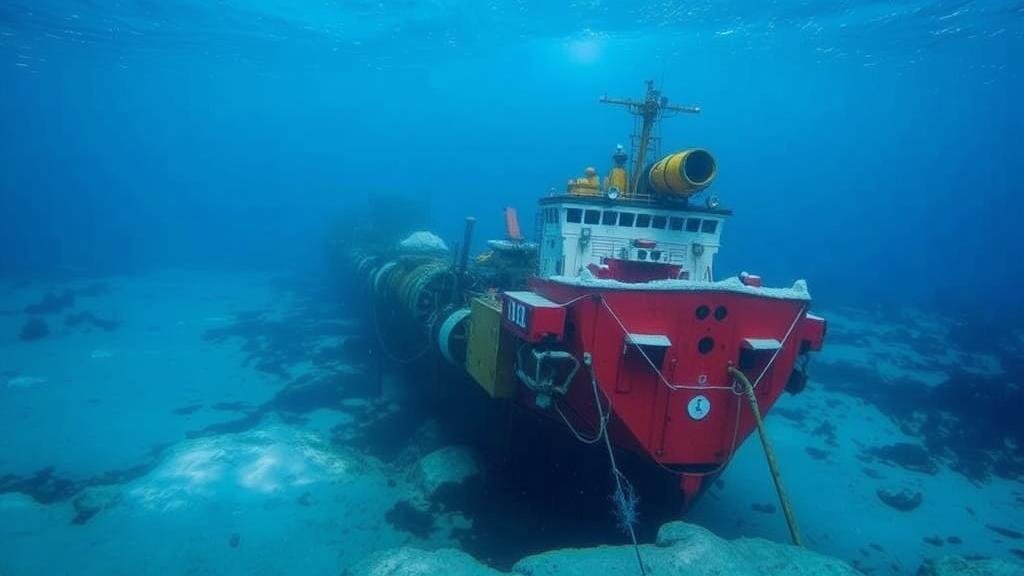Techniques for Locating Shipwrecks in Arctic Waters Using Sonar
Techniques for Locating Shipwrecks in Arctic Waters Using Sonar
The Arctic region, with its challenging geography and extreme environmental conditions, poses unique challenges for marine archaeology, especially in locating shipwrecks. But, advancements in sonar technology have provided effective techniques for identifying and surveying these submerged treasures. This article examines the various sonar techniques employed in Arctic waters, supported by concrete examples and case studies.
Understanding Sonar Technology
Sonar, an acronym for Sound Navigation and Ranging, is a technique that uses sound waves to detect and locate underwater objects. Sonar can be categorized into two main types: active and passive sonar.
- Active sonar: This method emits a sound pulse and listens for echoes that return after bouncing off an object, allowing for precise distance measurement. It is widely used in search missions for shipwrecks.
- Passive sonar: This approach listens for sounds emanating from submerged objects, typically used for surveillance rather than direct object location.
An example of active sonar is the use of multi-beam echo sounders (MBES), which emit multiple sound beams simultaneously to create detailed maps of the seafloor. r high-resolution capabilities make them invaluable for locating shipwrecks even in challenging Arctic conditions.
High-Frequency and Low-Frequency Sonar
When deploying sonar in Arctic waters, the choice between high-frequency and low-frequency sonar systems is critical, as each has its advantages and limitations.
- High-frequency sonar: This type produces shorter sound wavelengths, which offers better resolution and detail. But, its range is limited, making it suitable primarily for shallow waters.
- Low-frequency sonar: In contrast, this sonar has a longer range and can penetrate deeper waters but at the cost of resolution. It is ideal for detecting large shipwrecks in deeper Arctic waters.
For example, the research vessel Polarstern utilized low-frequency sonar to locate shipwrecks beneath heavy ice cover in the Arctic Ocean, demonstrating its effectiveness in deep exploration.
Side-scan Sonar: The Workhorse of Shipwreck Detection
Side-scan sonar (SSS) is a pioneering technique in shipwreck exploration. By sweeping a sonar beam from a towfish–the underwater device behind a survey vessel–side-scan sonar can cover large areas of the ocean floor quickly. The system operates by emitting sonar pulses at angles to create images of the seafloor and identify anomalies, such as shipwrecks.
Research conducted by the Arctic Research Center revealed that side-scan sonar can achieve 100% coverage of seabeds under typical conditions, allowing for the mapping of shipwreck sites extensively. A notable case is the discovery of the wreck of HMS Terror, which sank in 1848 during the failed Franklin Expedition; the wreck was located using side-scan sonar and subsequent ROV surveys, exemplifying the techniques efficiency.
Integration with Autonomous Underwater Vehicles (AUVs)
Autonomous Underwater Vehicles have enhanced traditional sonar methods by integrating advanced navigation and imaging capabilities. AUVs can execute pre-programmed survey missions in harsh Arctic environments, collecting high-resolution sonar data while avoiding the need for a surface vessel.
- Case Study: The exploration of the lost Russian submarine K-129 in the 1960s was profoundly aided by AUVs equipped with sonar technology. The AUVs provided detailed imagery of the seafloor, leading to the successful identification of the wreck.
- Real-World Application: Modern Arctic expeditions often deploy AUVs to survey known shipwreck sites, gathering data that informs conservation efforts and archaeological research.
Environmental Considerations and Challenges
While sonar technology has revolutionized shipwreck detection, it is important to consider the environmental impact on Arctic ecosystems. Sound waves can affect marine life, particularly mammals such as whales that rely on echolocation.
So, researchers must assess local ecosystems prior to sonar deployment. Studies indicate that minimizing sonar output and considering seasonal variations in marine life behavior can help mitigate adverse effects. Plus, using quieter sonar technology can reduce ecological impact while still enabling effective shipwreck location.
Conclusion and Future Directions
Sonar technology has greatly improved the efficiency and accuracy of locating shipwrecks in Arctic waters. By leveraging techniques such as side-scan sonar, AUVs, and the strategic use of various sonar frequencies, researchers can uncover lost maritime history while balancing ecological considerations. Continued advancements in sonar technology will undoubtedly enhance our ability to explore the underwater frontiers of the Arctic.
To wrap up, the integration of innovative sonar techniques stands to reshape our understanding of shipwrecks and marine archaeology. For aspiring marine archaeologists and researchers, it is essential to stay abreast of technological advancements while maintaining an objective perspective on environmental stewardship.



